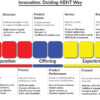
The Soil Health Card (SHC) Scheme in India, symbolized by the slogan “Swasth Dharaa. Khet Haraa.” (Healthy Earth. Green Farm), is a progressive initiative aimed at revolutionizing agriculture through informed soil management. However, despite its potential, the scheme has not been fully realized, marking it as a lost opportunity in the context of Indian agriculture.
The Genesis and Mechanism of the SHC Scheme
Launched by the Department of Agriculture & Co-operation under the Ministry of Agriculture and Farmers’ Welfare, the SHC scheme is a comprehensive approach to address the lacunae in farmers’ knowledge about soil health. The primary objective is to assess soil health and provide actionable recommendations to farmers for enhancing soil quality and crop yield. The SHC is a biennial report covering 12 key soil parameters, offering insights into nutrient status and required amendments. However, the effectiveness of this scheme hinges on the robustness of its implementation, which includes soil sampling, testing, and the dissemination of the SHCs to farmers.
Potential and Promise of the SHC Scheme
The SHC Scheme holds immense potential in transforming agricultural practices. By providing detailed soil health reports and recommending specific fertilizers and soil amendments, the scheme can lead to better crop choices and higher yields. Regular monitoring, every three years, ensures that farmers are equipped with the latest information on their soil’s health. This approach not only fosters sustainable farming practices but also aids in reducing the excessive use of fertilizers, thus mitigating environmental impact
Challenges and Shortcomings in Implementation
Despite its promising framework, the SHC scheme has encountered several roadblocks in its implementation. The key challenges include
- Inadequate Awareness and Utilization: Many farmers remain unaware of the scheme or lack understanding of how to interpret and use the SHC effectively. This gap in knowledge prevents them from reaping the full benefits of the scheme.
- Logistical and Operational Hurdles: The process of collecting, testing, and analyzing soil samples is resource-intensive. Inconsistencies in sampling methods, delays in testing, and the varied quality of labs can lead to inaccurate results. Additionally, the distribution of SHCs to individual farmers poses a logistical challenge.
- Lack of Integration with Other Agricultural Practices: The scheme operates in isolation, without integrating with other agricultural initiatives and practices. This disjointed approach limits its impact on the overall agricultural ecosystem.
- Variable Adoption by State Governments: The implementation of the scheme varies across states, influenced by local governance, resource availability, and prioritization. This uneven adoption hampers the scheme’s nationwide impact.
- Training and Technical Support: There is a significant need for training farmers in understanding and applying the recommendations of the SHC. Without proper guidance, the card remains underutilized.
The Road Ahead: Maximizing the SHC Scheme’s Potential
To harness the full potential of the SHC Scheme, a multi-faceted approach is necessary:
- Enhanced Farmer Education and Outreach: Conducting workshops and training sessions to educate farmers about soil health and the usage of SHCs is crucial. Leveraging local agricultural extensions, NGOs, and Krishi Vigyan Kendras (KVKs) can aid in this process.
- Strengthening Infrastructure and Quality Control: Improving the infrastructure for soil testing labs and standardizing protocols will ensure the reliability of soil health reports. Regular audits and quality checks are essential to maintain the scheme’s credibility.
- Integrating with Digital Technologies: Utilizing digital platforms for the dissemination of SHCs and related advisories can make the process more efficient and accessible.
- Collaboration with Academic Institutions: Involving universities and agricultural research institutions in the scheme can bring in scientific expertise and innovation. This collaboration can also open avenues for research on soil health and sustainable farming practices.
- Policy Support and Incentivization: Policy-level support to ensure uniform implementation across states and incentivization for farmers adopting recommendations from SHCs can boost participation.
In conclusion, while the SHC Scheme embodies a transformative approach to agriculture, its success is contingent on addressing the gaps in its execution. Bridging these gaps requires concerted efforts from the government, agricultural experts, and the farming community. When fully realized, the scheme has the potential to usher in a new era of sustainable and productive farming in India, ensuring “Swasth Dharaa, Khet Haraa.”
Prof. Dr. Prahlada N. B
19 October 2023
Chitradurga.

















Leave a reply